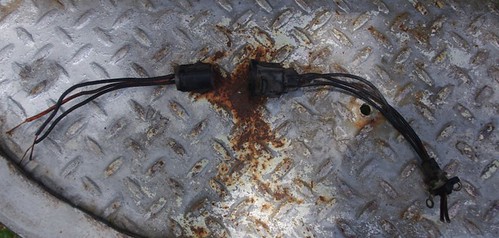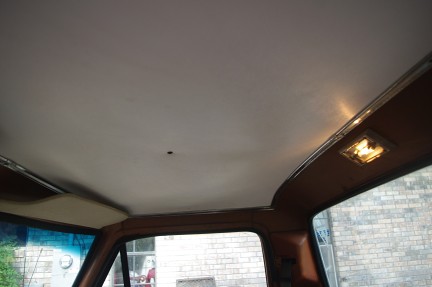
|

|
| Dirty and decaying instrument panel | Broken bulb socket |
I read on Ford Truck Enthusiasts that this instrument panel was used on Ford vans up until 1991. They changed the composition of the plastic in 1981 and the newer ones hold up much better. Off to the junkyard!
Right there in the first row was an '85 Ford Econoline. Just like we had when I was a kid, it was even a diesel!

|
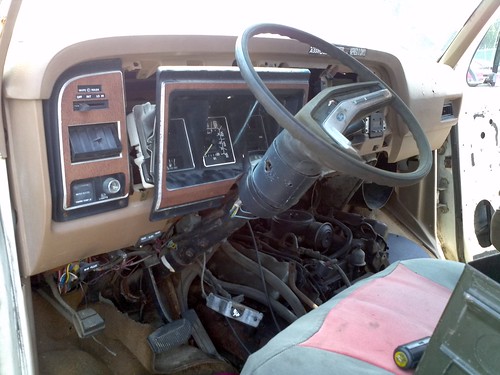
|
| 1985 Ford van with the 6.9 liter diesel | Pristine instrument panel |
A lot of these old vans had warning lights instead of oil and amp gauges, but this one had the full set of gauges. I was in and out in about 15 minutes.

|
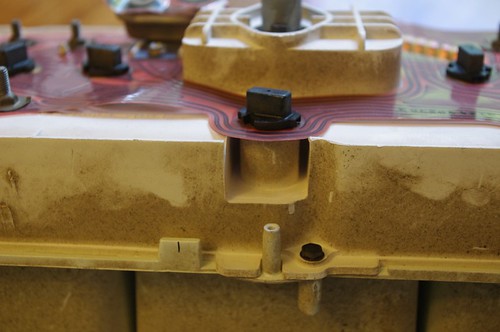
|
| New panel front | New panel rear. Dirt, but no decay |
There were a couple of minor problems. First this van was a diesel, which means the fuel gauge says "DIESEL FUEL ONLY." Second, the odometer reading does not match mine. I decided to switch out the fuel gauges. I don't want someone borrowing the truck and putting diesel in it accidently. The odometer I am just going to leave. The title to the truck lists "99,999" for the mileage ("beyond mechanical limits" basically), so there is no legal issue with an incorrect odometer reading. I documented the readings of both so one could calculate the correct(?) mileage. If I ever sell the truck, I will include the old instrument panel.
The fuel gauge swap was very easy, although old panel crumbles every time you touch it.
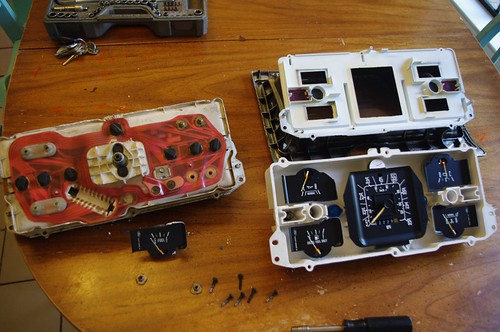 |
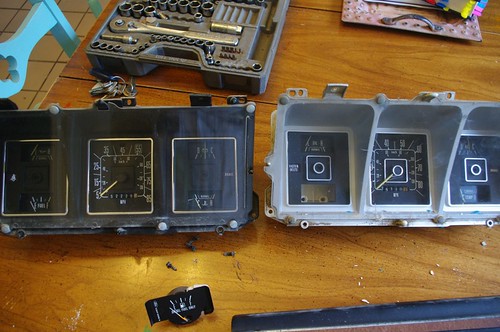
|
| Mid-swap | Done |
Unfortunately, the lights still don't work. I think I have a problem up stream somewhere, but the new panel looks great in the truck. I'll update with some pictures of the finished product.

